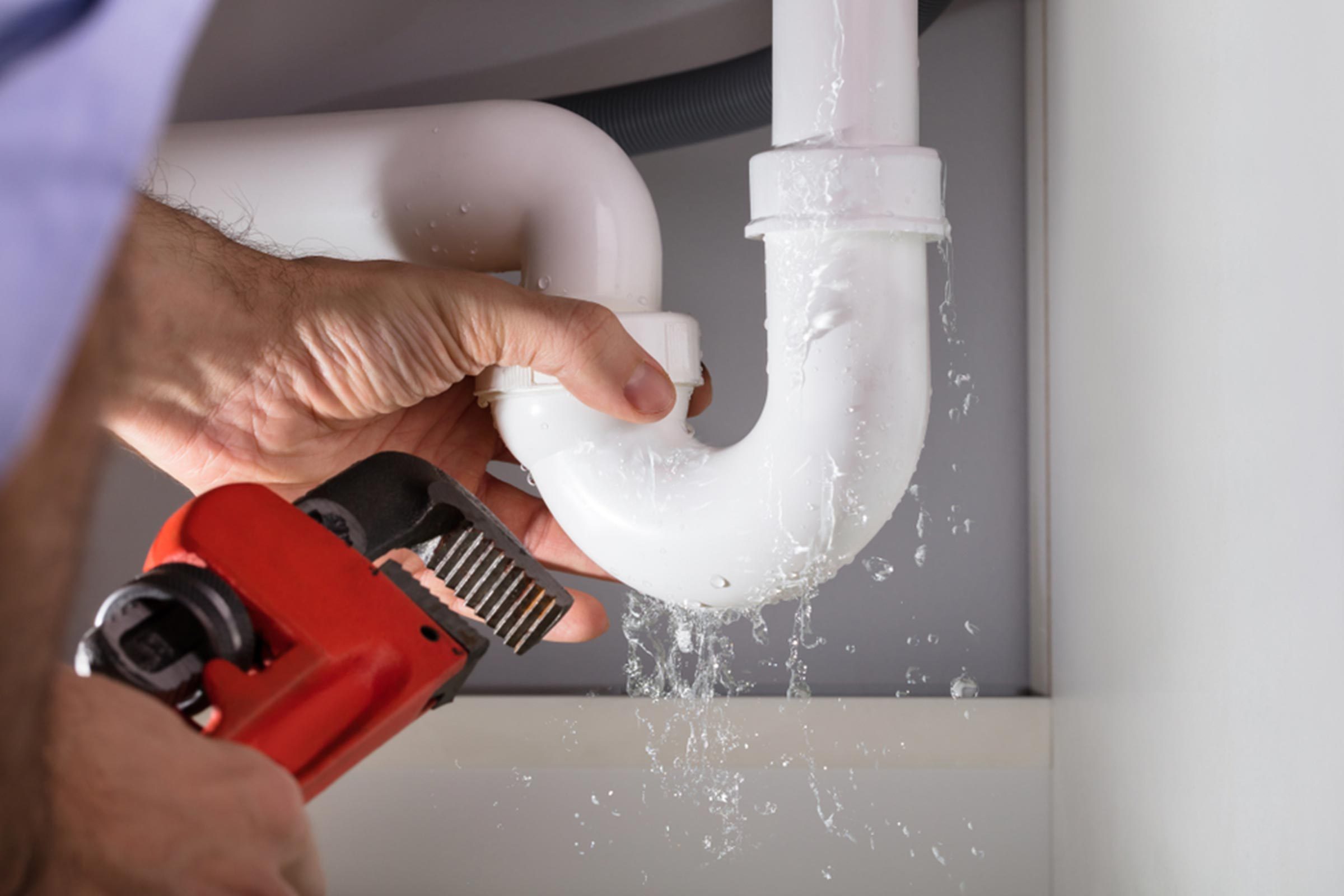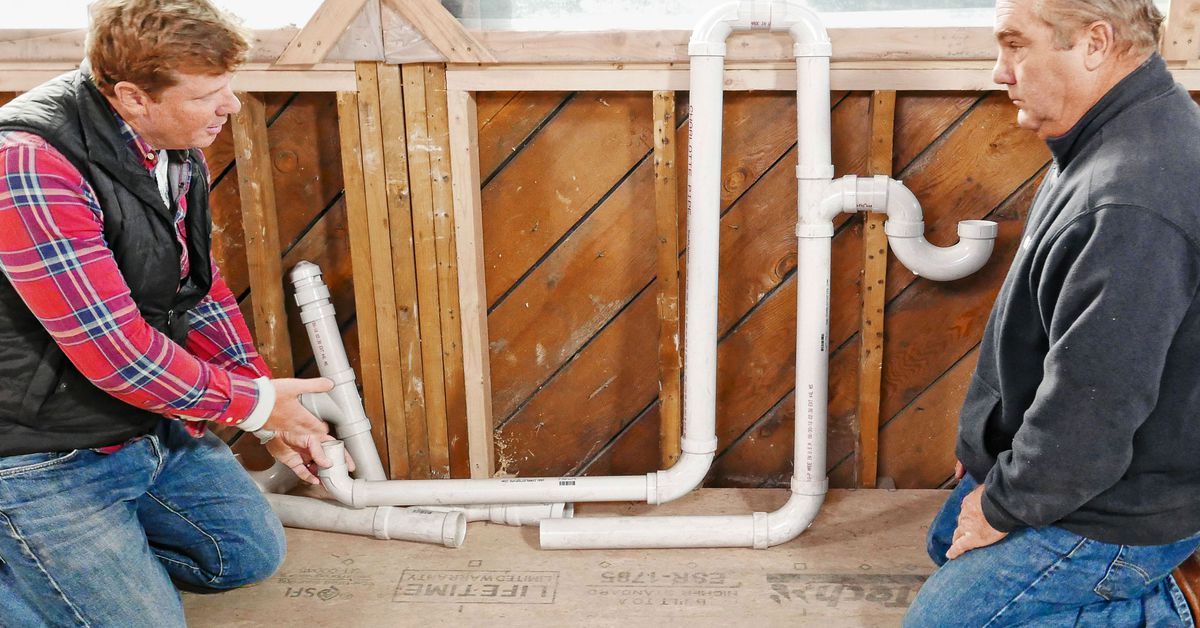Tips for Spot and Repair Annoying Plumbing in Your Residence
Tips for Spot and Repair Annoying Plumbing in Your Residence
Blog Article
Everyone may have their own unique conception when it comes to Why is My Home Making Strange Plumbing Noises.

To diagnose loud plumbing, it is important to identify very first whether the undesirable noises happen on the system's inlet side-in various other words, when water is turned on-or on the drain side. Noises on the inlet side have differed causes: too much water pressure, used shutoff and also tap components, improperly connected pumps or other appliances, improperly placed pipeline bolts, as well as plumbing runs having too many tight bends or other limitations. Noises on the drain side normally stem from bad location or, just like some inlet side sound, a format consisting of limited bends.
Hissing
Hissing noise that occurs when a faucet is opened a little typically signals too much water pressure. Consult your local water company if you presume this problem; it will have the ability to tell you the water stress in your location and can install a pressurereducing valve on the inbound supply of water pipeline if necessary.
Various Other Inlet Side Noises
Squeaking, squeaking, scratching, breaking, and also touching generally are triggered by the expansion or contraction of pipes, typically copper ones providing warm water. The noises occur as the pipelines slide against loose bolts or strike close-by residence framing. You can commonly identify the place of the trouble if the pipes are revealed; just comply with the noise when the pipes are making sounds. More than likely you will uncover a loosened pipe hanger or a location where pipes lie so close to flooring joists or various other mounting items that they clatter versus them. Attaching foam pipe insulation around the pipes at the point of call should fix the trouble. Be sure bands and also hangers are safe and secure as well as give sufficient support. Where possible, pipeline bolts should be attached to substantial structural components such as structure walls rather than to mounting; doing so lessens the transmission of resonances from plumbing to surfaces that can amplify and also transfer them. If affixing bolts to framing is unavoidable, cover pipelines with insulation or other resilient material where they get in touch with bolts, and sandwich completions of new bolts in between rubber washers when mounting them.
Dealing with plumbing runs that experience flow-restricting limited or numerous bends is a last resort that needs to be carried out just after speaking with an experienced plumbing service provider. Sadly, this circumstance is relatively usual in older residences that might not have been developed with interior plumbing or that have seen several remodels, especially by amateurs.
Babbling or Shrilling
Intense chattering or shrilling that occurs when a shutoff or tap is switched on, which normally disappears when the installation is opened totally, signals loosened or malfunctioning interior parts. The option is to change the valve or faucet with a brand-new one.
Pumps and home appliances such as cleaning equipments and dishwashers can move motor noise to pipes if they are improperly attached. Connect such things to plumbing with plastic or rubber hoses-never inflexible pipe-to isolate them.
Drain Noise
On the drain side of plumbing, the chief goals are to get rid of surface areas that can be struck by falling or rushing water as well as to insulate pipelines to consist of inevitable noises.
In new construction, tubs, shower stalls, bathrooms, as well as wallmounted sinks as well as containers should be set on or against durable underlayments to reduce the transmission of sound through them. Water-saving toilets and faucets are much less noisy than conventional designs; mount them as opposed to older kinds even if codes in your location still allow making use of older fixtures.
Drainpipes that do not run vertically to the cellar or that branch into straight pipeline runs sustained at floor joists or various other mounting existing particularly problematic sound problems. Such pipelines are large sufficient to radiate considerable resonance; they additionally lug significant quantities of water, which makes the circumstance worse. In new building and construction, specify cast-iron dirt pipes (the large pipes that drain pipes bathrooms) if you can afford them. Their massiveness includes much of the sound made by water travelling through them. Also, stay clear of transmitting drainpipes in walls shown to rooms and also rooms where people gather. Walls having drains should be soundproofed as was described previously, making use of double panels of sound-insulating fiber board as well as wallboard. Pipes themselves can be wrapped with unique fiberglass insulation produced the purpose; such pipes have an impervious plastic skin (in some cases containing lead). Results are not constantly sufficient.
Thudding
Thudding sound, often accompanied by shivering pipes, when a tap or device shutoff is turned off is a condition called water hammer. The sound and also resonance are brought on by the resounding wave of stress in the water, which unexpectedly has no place to go. In some cases opening a shutoff that releases water rapidly right into a section of piping including a limitation, elbow, or tee fitting can produce the very same condition.
Water hammer can normally be healed by installing installations called air chambers or shock absorbers in the plumbing to which the trouble shutoffs or faucets are connected. These gadgets enable the shock wave created by the halted flow of water to dissipate in the air they contain, which (unlike water) is compressible.
Older plumbing systems might have short vertical sections of capped pipe behind wall surfaces on faucet runs for the same purpose; these can eventually fill with water, minimizing or ruining their efficiency. The remedy is to drain the water system entirely by turning off the main water shutoff as well as opening all taps. Then open up the major supply shutoff and shut the taps individually, beginning with the tap nearest the shutoff and ending with the one farthest away.
WHY IS MY PLUMBING MAKING SO MUCH NOISE?
This noise indeed sounds like someone is banging a hammer against your pipes! It happens when a faucet is opened, allowed to run for a bit, then quickly shut — causing the rushing water to slam against the shut-off valve.
To remedy this, you’ll need to check and refill your air chamber. Air chambers are filled with — you guessed it — air and help absorb the shock of moving water (that comes to a sudden stop). Over time, these chambers can fill with water, making them less effective.
You’ll want to turn off your home’s water supply, then open ALL faucets (from the bathroom sink to outdoor hose bib) to drain your pipes. Then, turn the water back on and hopefully the noise stops! If you’re still hearing the sound, give us a call to examine further.
Whistles
Whistling sounds can be frustrating, as sometimes the source isn’t easily identified. However, if you can pinpoint which faucet or valve that may be the cause, you’ll likely encounter a worn gasket or washer — an easy fix if you replace the worn parts!Whistling sounds from elsewhere can mean a number of things — from high water pressure to mineral deposits. Your best plan of attack here is to give our plumbing experts a call. We’ll be able to determine where the noise is coming from and what the cause may be, then recommend an effective fix!
Cracks or Ticks
Cracking or ticking typically comes from hot water going through cold, copper pipes. This causes the copper to expand resulting in a cracking or ticking sound. Once the pipes stop expanding, the noise should stop as well.
Pro tip: you may want to lower the temperature of your water heater to see if that helps lessen the sound, or wrapping the pipe in insulation can also help muffle the noise.
Bangs
Bangs typically come from water pressure that’s too high. To test for high water pressure, get a pressure gauge and attach it to your faucet. Water pressure should be no higher than 80 psi (pounds per square inch) and also no lower than 40 psi. If you find a number greater than 80 psi, then you’ve found your problem!
Next step is to give us a call in order to install a pressure regulator. Trust us, you don’t want to wait to resolve this issue. Not only is the sound annoying, but high water pressure can be destructive to your home — including damaging certain appliances, like your washer and dishwasher.
Dripping
You might be accustom to the slow quiet drip your kitchen faucet makes. You might have even tuned out your bathroom sink dripping and drabbing all day long — but it’s time to find its cause.
A slow drip could signify a variety of easy to fix issues, such as a worn out O ring, or loose part. And by ignoring the drip, you could be wasting up to 2,000 gallons of water a year! So start conserving water — get it looked at ASAP.
https://www.pwessig.com/blog/2018/december/why-is-my-plumbing-making-so-much-noise-/

I hope you enjoyed reading our excerpt about How To Fix Noisy Pipes. Thanks a lot for taking the time to read through our posting. For those who appreciated our article please remember to share it. Bless you for your time. Visit us again soon.
Superior emergency plumbing? We're here. Report this page